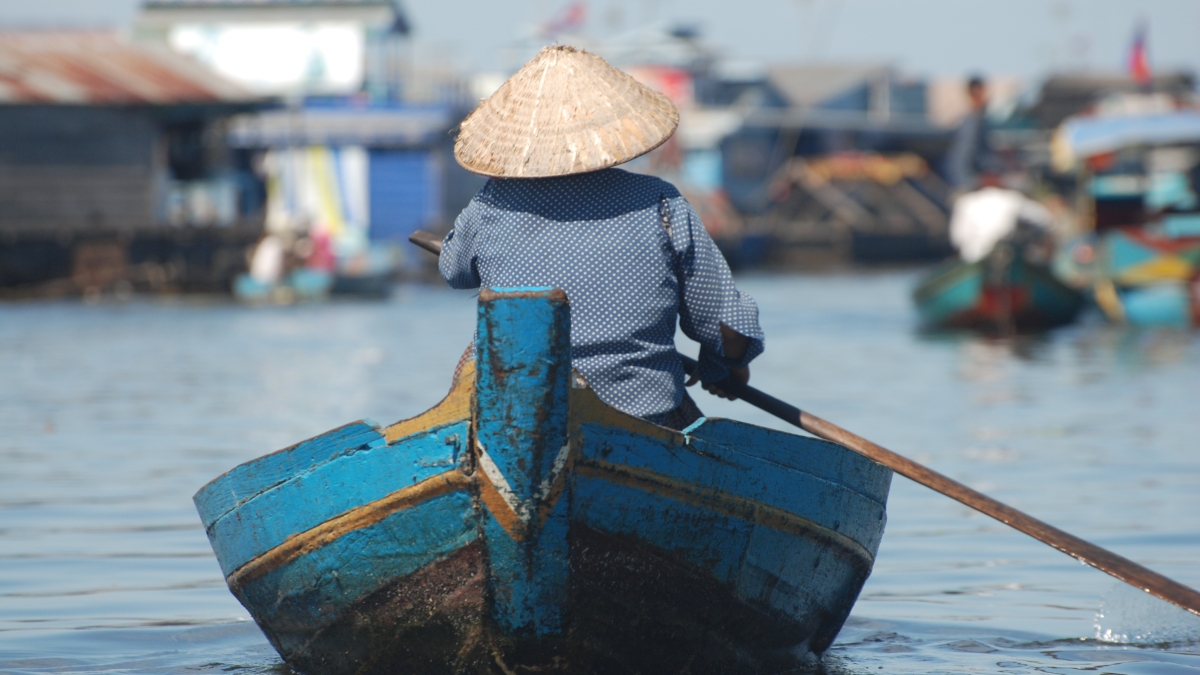ASU research offers hydropower dam energy solution without sacrificing Mekong food supply

A boat in Cambodia's Tonle Sap Fishing Village. Photo by John Sabo/Arizona State University.
The Mekong River is an economic engine for fishermen and a food source for millions of people worldwide. Nearly 100 hydropower dams are planned for construction along tributaries off the river’s 2,700-mile stretch, which flows through Burma, China, Vietnam, Laos, Thailand and Cambodia.
But while the dams are expected to provide clean energy to the region, if not managed properly, they also have the potential to offset natural river patterns, which would damage food production, supply and business.
Arizona State University Professor John Sabo and collaborators have proposed a solution in the Dec. 8 issue of Science magazine that allows dam operators to generate power in ways that also protect — and possibly improve — food supplies and businesses throughout the Mekong river basin.
“We have figured out the relationship between river flows and fish catch, and we have developed an algorithm for dam operators to use that will increase fish harvests and still generate power,” Sabo said. “Dams are going to be built no matter how much fuss we make; our research shows how we can be more strategic about the buildout and operations of these dams in the Mekong.”
The proposed solution, the first of its kind for this problem, can be applied to other large river systems around the world facing similar tradeoffs.
The Mekong river floods annually, and it is known that those floods are important for fisheries, Sabo said. New in this research is the recognition that seasonal droughts are equally important. Long droughts combined with short floods may create the ideal conditions for terrestrial nutrients to be entrained into the freshwater system.
With that in mind, the algorithm presented by Sabo et al. in Science recommends long low-flow periods punctuated by pulses of flooding, which will allow dam operators to co-manage their power generation priorities, while protecting livelihoods for fisheries downstream.
Sabo worked with other ASU researchers on the project, as well as researchers from the University of Washington, University of Maryland, Conservation International, the University of South Florida, the Mekong River Commission and Aalto University.
“We have taken this conversation around fisheries and dams in the Mekong from a yes-or-no conversation, from a good idea-bad idea conversation, and we have come up with an alternative, a mathematical formula that has the possibility to achieve dam operator goals and protect fisheries,” said Gordon Holtgrieve, an assistant professor at the University of Washington.
With recent funding from the National Science Foundation, Sabo, Holtgrieve and a team of researchers will expand the project to better understand how dam operators can balance power generation needs with other factors, including rice production, food nutritional quality and ecological goals.
More Science and technology

Indigenous geneticists build unprecedented research community at ASU
When Krystal Tsosie (Diné) was an undergraduate at Arizona State University, there were no Indigenous faculty she could look to…

Pioneering professor of cultural evolution pens essays for leading academic journals
When Robert Boyd wrote his 1985 book “Culture and the Evolutionary Process,” cultural evolution was not considered a true…

Lucy's lasting legacy: Donald Johanson reflects on the discovery of a lifetime
Fifty years ago, in the dusty hills of Hadar, Ethiopia, a young paleoanthropologist, Donald Johanson, discovered what would…


